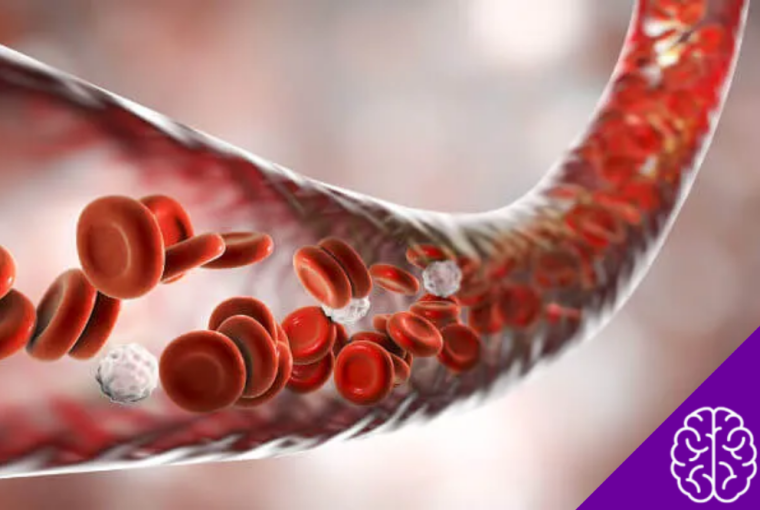Have you ever stopped to wonder how something as vital as human blood is created in the body? This remarkable substance flows through every organ, delivering oxygen and nutrients while carrying away waste. But what goes on behind the scenes to produce this life-sustaining liquid?
By the end of this post, you’ll have uncovered the fascinating process of blood production, a function the human body has perfected down to a science. We’ll explore where blood is made, the types of blood cells, and the vital roles each one plays in keeping you alive and thriving. If you’re ready to take a closer look at what makes your veins tick, read on!
What Is Blood, and Why Is It Important?
Before we talk about how blood is made, it’s essential to understand what blood is and why it’s so crucial. Blood isn’t just a red liquid coursing through your veins. It’s a complex tissue made up of different components, including:
- Red Blood Cells (RBCs), which carry oxygen from your lungs to the rest of your body.
- White Blood Cells (WBCs), which are part of your immune system and help fight infections.
- Platelets, which assist in blood clotting to stop bleeding.
- Plasma, the liquid component that makes up more than half of your blood and transports nutrients, hormones, and waste.
Blood is the body’s delivery system. Without it, your organs wouldn’t function, and you couldn’t survive.
But where does blood come from in the first place? The answer lies in a tiny, hidden part of your body—your bone marrow.
The Production Factory: Bone Marrow
Blood production happens deep inside your bones, in a soft, sponge-like tissue called bone marrow. This “factory” is responsible for producing the blood components we discussed earlier.
Your bone marrow contains hematopoietic stem cells, which are the building blocks of all blood cells. These incredible stem cells have the ability to transform into any of the three main blood cell types.
The process of blood production is known as hematopoiesis, and it’s a continuous cycle ensuring that your body has the blood it needs every single day.
Fun fact: Your bone marrow produces about 200 billion red blood cells, 10 billion white blood cells, and 400 billion platelets every day!
Let’s now take a closer look at how each type of blood cell is formed and what makes them so special.
How Blood Cells Are Made
1. The Birthplace of Blood Cells
Everything starts with hematopoietic stem cells in the bone marrow. These stem cells are unique because they’re “undifferentiated,” meaning they don’t have a specific function yet. Think of them as blank slates.
Under the influence of growth factors and signals from your body, these stem cells decide what they will become—a process called differentiation.
2. Red Blood Cells (RBCs): Oxygen Transporters
When hematopoietic stem cells are signaled to make red blood cells, they go through several stages of development. Once fully matured, red blood cells:
- Lose their nucleus, giving them their distinctive disc shape.
- Become packed with hemoglobin, a protein that carries oxygen.
A mature red blood cell stays in circulation for about 120 days before being replaced by new ones.
3. White Blood Cells (WBCs): Immune Defenders
White blood cells are formed in much the same way but branch off into several subtypes, each with a unique role in your immune system. For example:
- Neutrophils are the first responders, attacking bacteria and fungi.
- Lymphocytes, such as T cells and B cells, fight viruses and remember specific infections to help prevent future attacks.
These cells work tirelessly to protect your body from harmful invaders.
4. Platelets: Wound Healers
Platelets, also called thrombocytes, originate from larger cells in the bone marrow called megakaryocytes. These megakaryocytes break into smaller fragments, which become the platelets we need to form clots and stop bleeding when injuries occur.
Once in the bloodstream, platelets are always ready to spring into action when a blood vessel is damaged.
5. Plasma: The Liquid Transporter
While the cells are critical, they wouldn’t get anywhere without plasma. Plasma comprises about 55% of your blood’s volume and is made in your liver. It’s mainly water but also contains important proteins, nutrients, and waste products to keep your system balanced.
How Blood Cell Production Is Regulated
Your body is incredibly intelligent when it comes to regulating blood production. It keeps a close eye on blood levels and ramps up or slows down production depending on your needs.
For example:
- If you lose a lot of blood due to an injury, your bone marrow starts working overtime to replenish your red blood cells.
- If you’re fighting an infection, your body produces more white blood cells.
- Low oxygen levels prompt the kidneys to release a hormone called erythropoietin, which signals the bone marrow to make more red blood cells.
This dynamic system ensures your body always has what it needs to function.
What Happens When Blood Production Goes Wrong?
While your bone marrow is usually up to the task, certain conditions can disrupt blood production. These include:
- Anemia, when your body doesn’t produce enough red blood cells or hemoglobin.
- Leukemia, a type of cancer affecting the white blood cells.
- Thrombocytopenia, when platelet levels are too low, leading to excessive bleeding.
If you experience persistent fatigue, frequent infections, or easy bruising, it could indicate a problem with your blood production, and you should consult a healthcare professional.
How You Can Support Healthy Blood Production
Here are a few ways to keep your blood production running smoothly:
- Eat a Balanced Diet. Foods rich in iron, vitamin B12, and folic acid are crucial for red blood cell production. Leafy greens, beans, and red meat are great options.
- Stay Active. Exercise promotes healthy circulation, which helps carry nutrients to your bone marrow.
- Avoid Smoking and Excessive Alcohol. These can interfere with the production of healthy blood cells.
- Get Regular Checkups. Routine blood tests can catch any issues before they become serious.
Blood Production Is Nothing Short of Amazing
The human body’s ability to produce and maintain blood is one of its most impressive feats. From the humble hematopoietic stem cell to the hardworking red blood cells delivering oxygen to millions of cells, blood production is a symphony of precision and teamwork.
The next time you feel your heartbeat or notice your veins beneath your skin, remember the extraordinary system working non-stop to keep you alive and healthy. Whether you’re sipping a cup of coffee, climbing a mountain, or simply reading this blog, your blood makes it all possible.
Do you have more questions about how the body works? Leave a comment, and we’ll explore more fascinating topics together!


